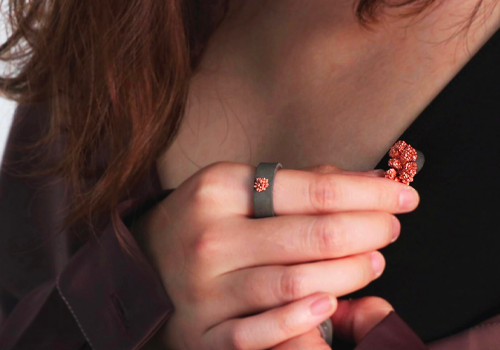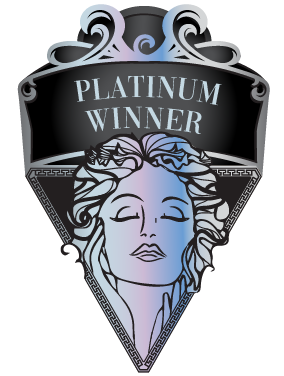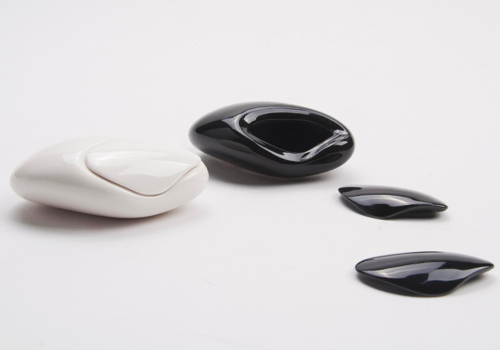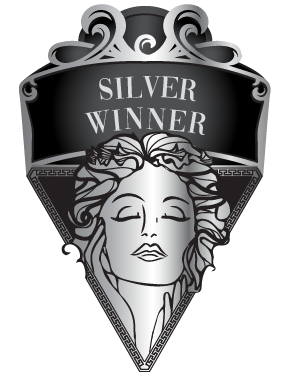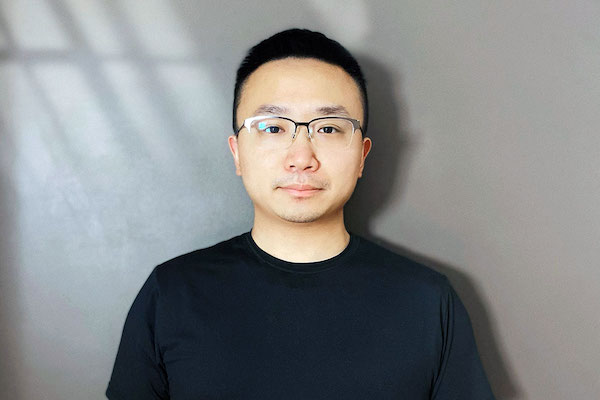
Interview
Xiaodong Ma
1 Please give us a brief bio of yourself and your design background.
I am Xiaodong Ma, an industrial designer and visual artist based in Chicago. I was born and raised in China in 1991 and earned my Master's degree in Industrial Design at California College of the Arts in 2019. Over the past decade, I have primarily focused on the design and development of healthcare and bicycle products. I am passionate about creating evolutionary products that integrate physical and digital experiences. Additionally, I am a 2D/3D visual artist. Unlike rational, engineering-oriented, profit-driven commercial projects, visual art is a form of self-expression at the intersection of art and design.
2 What made you become/why did you choose to become a designer/artist?
During my undergraduate program from 2009 to 2013, I immersed myself in Donald Norman's 'The Design of Everyday Things' and discovered the crucial role of design as a bridge between technology and life
3 Tell us more about your business/company, job profile, and what you do.
I have ten years of professional experience in industrial design. Currently, I hold the position of Senior Industrial Designer at SRAM in Chicago, where I am responsible for the design development of road bike components. Over the past decade, I have worked with design agencies, enterprises, and startups to bring design concepts to mass-produced products. This involved collaborating closely with diverse stakeholders in both the United States and China.
4 What does “design” mean to you?
I am a person with an immense curiosity about everything, and design is the best way for me to satisfy that curiosity. I have been involved in a wide range of design projects across various industries, including E-scooters, healthcare, consumer packaging, jewelry, home fitness, smart apparel, and bicycles. Every design project provides me with an opportunity to engage with diverse user groups, learn about different industries, and understand various product structures. Design is also a tool and methodology for expressing my perspective. For example, through my winning design '2e-', a series of experimental jewelry made of industrial copper waste via electrolysis, I aim to encourage users to rethink our traditional recycling systems.
5 What’s your favorite kind of design and why?
Intuitive and minimalist design is my favorite. It not only creates an intuitive user experience but also seamlessly integrates with the user's environment. For example, the Samsung Frame TV presents a minimal design resembling a picture frame that perfectly blends into the home environment. I am a fan of this kind of design because nowadays, more and more products constantly fill our lives. Being surrounded by brands and products makes me feel overwhelmed and anxious. Minimal and intuitive designs appear at the right time and place, seamlessly blending into the environment when not in use.
6 To you, what makes a “good” design?
I have several criteria for good design. Does the product solve problems without creating more? Does it provide a seamless user experience? Is the product's interface simple and easy to understand? Does the product have appropriate materials, colors, and finishes? Last but not least, is the product profitable enough to support the continuous release of good design for the brand? Good design also requires a designer's sensitivity, a habit of observing, capturing, and recording life details, and the ability to see infinite possibilities in ordinary things. Additionally, a foundation in the technical skills of visual expression is essential. The mastery of these skills directly influences the quality of your design presentation.
7 Describe your design style and its main characteristics.
Biomimetic design is my design style. I am fascinated by things in nature, such as roadside stones, branches, leaves in the mountains, and seashells by the sea. I focus on capturing the 'changes' and 'growth' of biomimetic design in my work. I enjoy observing the diversity of 3D forms in nature. For instance, when I created the winning design work '2e-', I controlled variables in the electrolysis process to make different forms of copper resembling coral, mushrooms, and crystals. Compared to my rational and engineering-oriented industrial design background, the purity of nature-form is attractive to me.
8 Do you think your country and its cultural heritage has an impact on your design process?
Certainly! This cultural influence is potent and inherent in my design work. I was born and raised in China, and my cultural heritage reflects who I am. I believe that cultural expression in design is not as simple as a stack of cultural elements but a way to convey the values and perspective of culture. For example, my other design that won a Silver award in the product category, the 'Pebble Hand-warmer,' incorporates the interpretation of stones in Chinese culture, representing static and peaceful. I translated this meaning into my design with the hope that users would experience inner peace when they touch the shape and texture of the stone. Additionally, the design's minimal and natural form can easily blend into the home environment and elevate the meditation experience.
9 Congratulations! As the winner of the 2023 MUSE Design Awards, what does it mean to you and your company and team to receive this award distinction?
The jury of the Muse Design Award represents the highest standard in design industries. Winning this award fills me with immense pride and excitement. The recognition I've received from the Muse Design Award will serve as a powerful source of inspiration, motivating me to push the boundaries of my design and creative endeavors.
10 Can you explain a bit about the winning work you entered into the 2023 MUSE Design Awards, and why you chose to enter this project?
My design project, 2e-, has been honored with the prestigious Platinum award in both the Material and Jewelry categories. 2e- is a groundbreaking series of experimental jewelry crafted from industrial copper waste through the process of electrolysis. This unique collection aims to redefine the concept of beauty by transforming industrial waste into exquisite jewelry pieces while also advocating for material-recycling process innovation. In today's world, the global demand for copper continues to rise, leading to increased production and subsequent challenges in recycling copper waste. Conventional copper recycling methods often contribute to environmental pollution. In response to these challenges, I have proposed an alternative, more sustainable solution that not only promotes eco-friendliness but also celebrates the aesthetic potential of industrial materials.
11 What was the biggest challenge with this project?
As a designer, my most significant challenge was understanding the principles of electrolysis and establishing experimental procedures. Over several months, I immersed myself in experiments involving the copper electrolysis reaction, aiming to explore the range of copper forms influenced by various factors, including the anode, cathode, voltage, current, and density of the sulfate solution. I discovered that the shape of the copper crystals could be controlled by manipulating these factors.
12 How has winning an Award developed your practice/career?
Winning awards in the design industry is a recognition of my work and the perspectives I convey through design. It also connects me with fellow designers and artists who share similar passions. For example, my project received Platinum Awards in both the Material and Jewelry categories, allowing me to explore other award-winning designs. In the Material category, I found inspiration from projects that used innovative materials, shaping my future work. Additionally, the Muse Design Award provides publication and interview opportunities, enabling me to communicate my design concepts to a wider audience and encouraging more discussions.
13 What are your top three (3) favorite things about our industry?
In the design industry, my top three favorite aspects are the creative problem-solving mindset, the commitment to craftsmanship in product refinement, and the culture of open-minded communication.
14 What makes your country specifically, unique in the design industry?
China boasts a vast community of designers, and many Chinese enterprises are highly attuned to emerging trends, embracing new technologies with an open mindset. Additionally, the extensive availability of materials suppliers and production resources in China empowers design professionals to swiftly translate these trends into products that enhance daily life. Over the past decade, we've witnessed the rise of numerous unicorn companies and their iconic products, such as DJI, Xiaomi, and NIO. These Chinese brands and their products have garnered widespread recognition in the international design industry.
15 Where do you see the evolution of design industry going over the next 5-10 years?
In the next 5-10 years, I anticipate the emergence of iconic designs within the realms of artificial intelligence, smart healthcare, and personal health. We will witness an increase in speculative design projects aimed at exploring future lifestyles. Furthermore, we can expect a rise in hybrid designers who will play pivotal roles in the industry. For instance, the development of smart products, like VR/AR glasses, often demands a fusion of virtual and physical design. Hybrid designers possess unique advantages in collaborating with both software and hardware teams.
16 If you were a student entering this industry or an aspiring MUSE Design Awards submitter, what advice would you give them?
If you have an idea, build it, don
17 What resources would you recommend to someone who wants to improve their skills in the design industry?
I would like to suggest three platforms that can help you enhance specific design skills: LinkedIn Learning for developing design leadership, the Keyshot YouTube channel for 3D rendering, and Behance for sharing your design work.
18 Tell us something you have never told anyone else.
It seems like I may have OCD tendencies, both in my work and personal life.
19 Who has inspired you in your life and why?
I was truly impressed and inspired by my 5-year-old daughter, Mia. Her sheer joy in drawing and her penchant for using anything and everything around her as drawing tools served as a powerful reminder that creative expression should never be confined to traditional mediums.
20 What is your key to success? Any parting words of wisdom?
Stay curious, stay hungry.
21 Which THREE (3) friends/peers would you nominate to participate in the next MUSE Design Awards?
I'd like to propose the nomination of my friend, Junyang Wan, who is a service designer, my partner, Dan Qian, who specializes in industrial design, and my former coworker, Paul Sukphisit, who excels in both industrial design and design engineering, to enter the upcoming MUSE Design Awards. These individuals possess exceptional talent and creativity in their respective fields.
22 Do you have anything else you would like to add to the interview?
Once again, thank you to the Muse Design Award for providing a platform for designers worldwide to showcase works and exchange ideas. The competition is well-structured and planned, offering designers ample preparation time and professional assistance. Additionally, despite time zone differences, I could still receive quick updates about the competition during the communication with the organizers.
